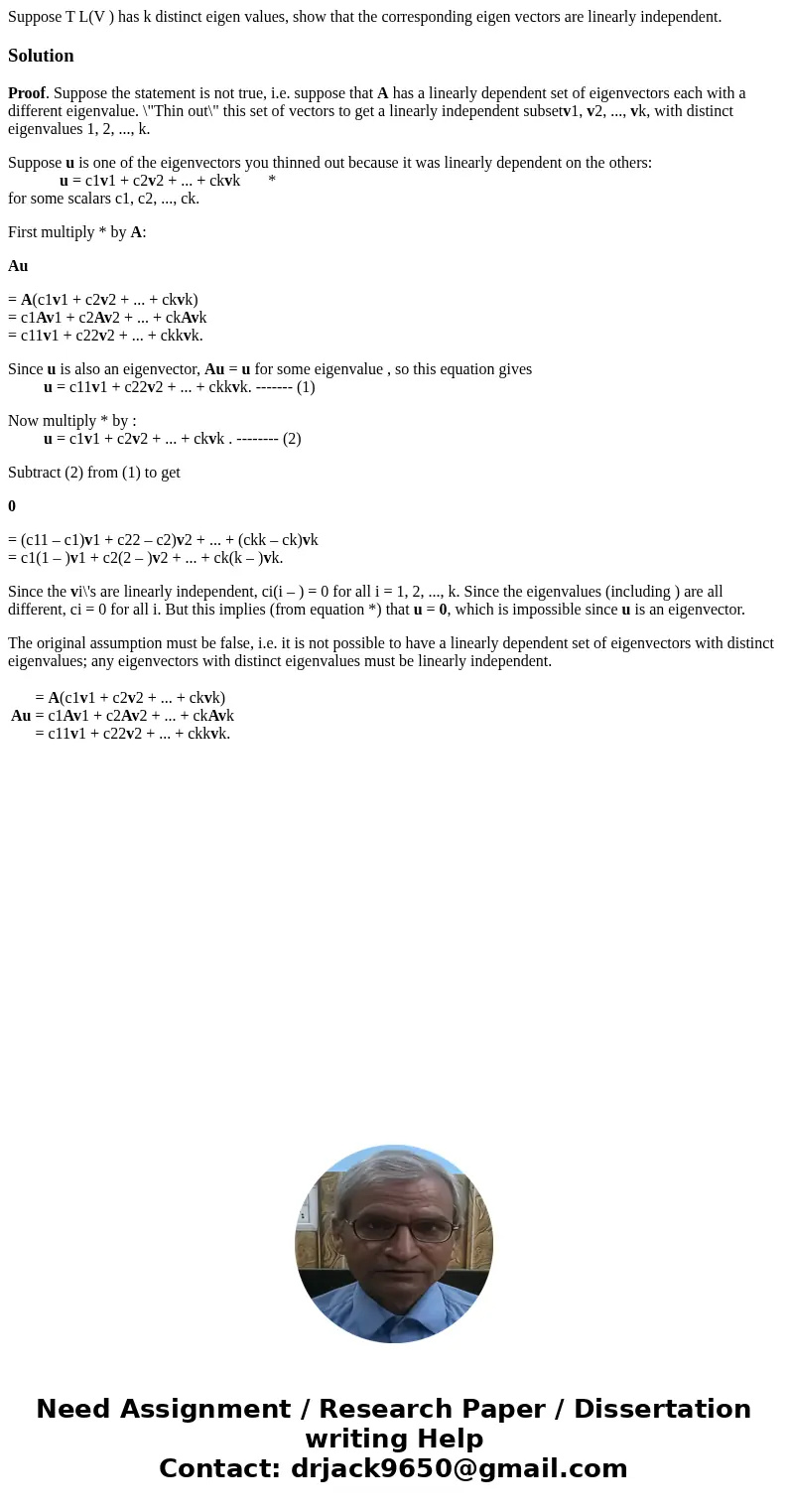Suppose T LV has k distinct eigen values show that the corr
Suppose T L(V ) has k distinct eigen values, show that the corresponding eigen vectors are linearly independent.
Solution
Proof. Suppose the statement is not true, i.e. suppose that A has a linearly dependent set of eigenvectors each with a different eigenvalue. \"Thin out\" this set of vectors to get a linearly independent subsetv1, v2, ..., vk, with distinct eigenvalues 1, 2, ..., k.
Suppose u is one of the eigenvectors you thinned out because it was linearly dependent on the others:
u = c1v1 + c2v2 + ... + ckvk *
for some scalars c1, c2, ..., ck.
First multiply * by A:
Au
= A(c1v1 + c2v2 + ... + ckvk)
= c1Av1 + c2Av2 + ... + ckAvk
= c11v1 + c22v2 + ... + ckkvk.
Since u is also an eigenvector, Au = u for some eigenvalue , so this equation gives
u = c11v1 + c22v2 + ... + ckkvk. ------- (1)
Now multiply * by :
u = c1v1 + c2v2 + ... + ckvk . -------- (2)
Subtract (2) from (1) to get
0
= (c11 – c1)v1 + c22 – c2)v2 + ... + (ckk – ck)vk
= c1(1 – )v1 + c2(2 – )v2 + ... + ck(k – )vk.
Since the vi\'s are linearly independent, ci(i – ) = 0 for all i = 1, 2, ..., k. Since the eigenvalues (including ) are all different, ci = 0 for all i. But this implies (from equation *) that u = 0, which is impossible since u is an eigenvector.
The original assumption must be false, i.e. it is not possible to have a linearly dependent set of eigenvectors with distinct eigenvalues; any eigenvectors with distinct eigenvalues must be linearly independent.
| Au | = A(c1v1 + c2v2 + ... + ckvk) |

 Homework Sourse
Homework Sourse